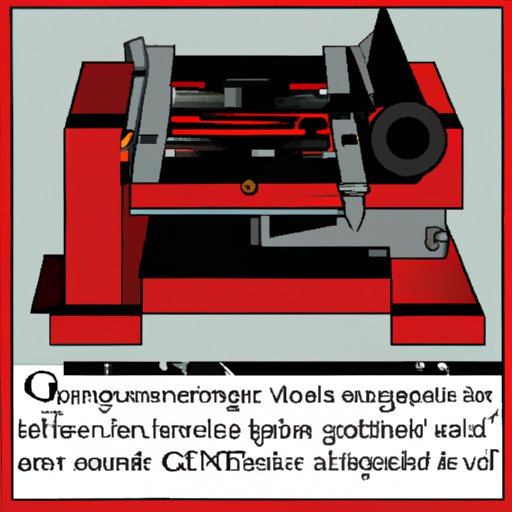Introduction
The printing press is one of the most important inventions of all time. Developed in the mid-15th century by Johannes Gutenberg, it revolutionized the way books were created and changed the course of history. This article examines the development of the printing press, the inventor’s inspiration, the technological breakthroughs it enabled, and its lasting impact on the world.

A Historical Perspective – Tracing the Development of the Printing Press
Prior to Gutenberg’s invention of the printing press, books were written by hand, a laborious process that was time-consuming and expensive. The Chinese had experimented with block printing since the 8th century, but it was not until Gutenberg’s invention of movable type that the printing press became a viable option for mass production.
Gutenberg’s invention was revolutionary because it allowed for the rapid production of books, pamphlets, and other printed materials. This new technology spread quickly throughout Europe, and within a few decades, printed books had become widely available. By the end of the 16th century, there were over 200 printing presses in operation across Europe.
The Inventor’s Inspiration – Examining Johannes Gutenberg’s Motivation and Process
Johannes Gutenberg was born in Mainz, Germany in 1398. He was an ambitious man who studied metalworking and bookbinding. He was inspired by a goldsmith he knew who used a combination of stamps and hammers to create intricate patterns on coins. This technique gave him the idea of using movable type, which would allow for faster and more accurate printing.
Gutenberg began experimenting with different materials and techniques, eventually settling on a system of movable type made of lead alloy. He also developed a press that allowed books to be printed more quickly than ever before. It took him several years to perfect his invention, but by 1450, he was able to produce his first printed book, the famous Gutenberg Bible.

A Technological Breakthrough – Examining the Revolutionary Impact of the Printing Press
The invention of the printing press had a profound impact on society. Before the printing press, books were rare and expensive; after its invention, books could be produced much more quickly and cheaply. This led to an increase in literacy and education as more people were able to access books.
The printing press also improved accuracy. Because each letter was cast from a mold, it was much easier to reproduce texts exactly as they had been written. This allowed for more reliable translations of religious texts and scientific works, which further advanced knowledge and learning.
How it Changed the World – Exploring the Social, Political, and Economic Impacts of the Invention
The invention of the printing press had far-reaching consequences. It increased literacy and education throughout Europe, allowing people to access information that had previously been out of reach. This had a huge impact on the spread of ideas, as books, pamphlets, and newspapers could now be printed and distributed more quickly and easily.
The printing press also had political implications. With the widespread availability of printed material, people were exposed to different opinions and points of view. This had a significant effect on the development of democratic thought and ultimately led to the Enlightenment era.
Finally, the printing press had a major economic impact. The cost of books decreased dramatically, making them accessible to a wider audience. This led to the growth of the publishing industry, which continues to be a major contributor to the global economy.
A Closer Look at the Design – Analyzing the Mechanics and Design of the Printing Press
Gutenberg’s design for the printing press was relatively simple: it consisted of a wooden frame, a set of moveable type, and a screw-like mechanism to press the type onto the paper. Over time, improvements were made to the design, including the addition of a roller system to improve the accuracy of the printed text.
In the 19th century, steam power was added to the printing press, allowing for even faster production. By the 20th century, printing presses had become incredibly efficient and were capable of producing thousands of copies per hour.

The Reception of the Printing Press – Exploring Popular Opinion about the Invention
When Gutenberg’s printing press was first introduced, it was met with both praise and criticism. Some praised the invention for its potential to spread knowledge, while others feared its potential for spreading misinformation. Over time, however, the printing press was embraced as a tool for disseminating information and advancing knowledge.
The printing press also had a major cultural impact. As books, newspapers, and pamphlets became more widely available, people were exposed to new ideas and perspectives. This led to a greater appreciation for literature and art, as well as a better understanding of the world.
Conclusion
The invention of the printing press by Johannes Gutenberg in the 15th century revolutionized the way books and other printed materials were produced. The printing press enabled faster and more accurate production of books, leading to an increase in literacy and education. It also allowed for the spread of ideas and had a major impact on politics and culture. The printing press remains an important invention, and its legacy continues to shape our world today.
(Note: Is this article not meeting your expectations? Do you have knowledge or insights to share? Unlock new opportunities and expand your reach by joining our authors team. Click Registration to join us and share your expertise with our readers.)
